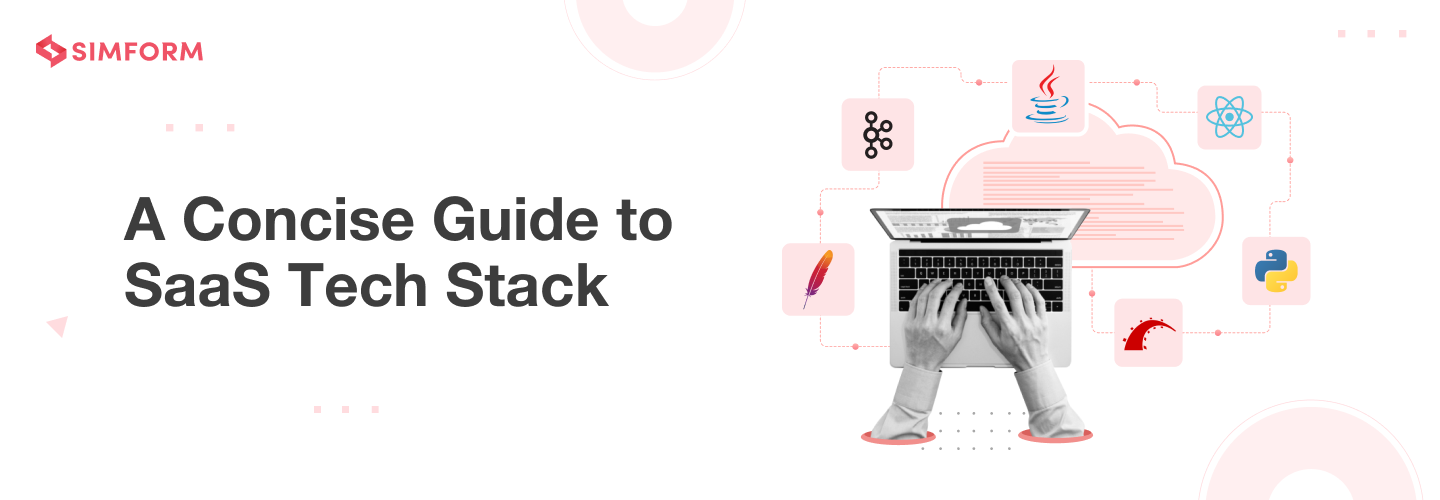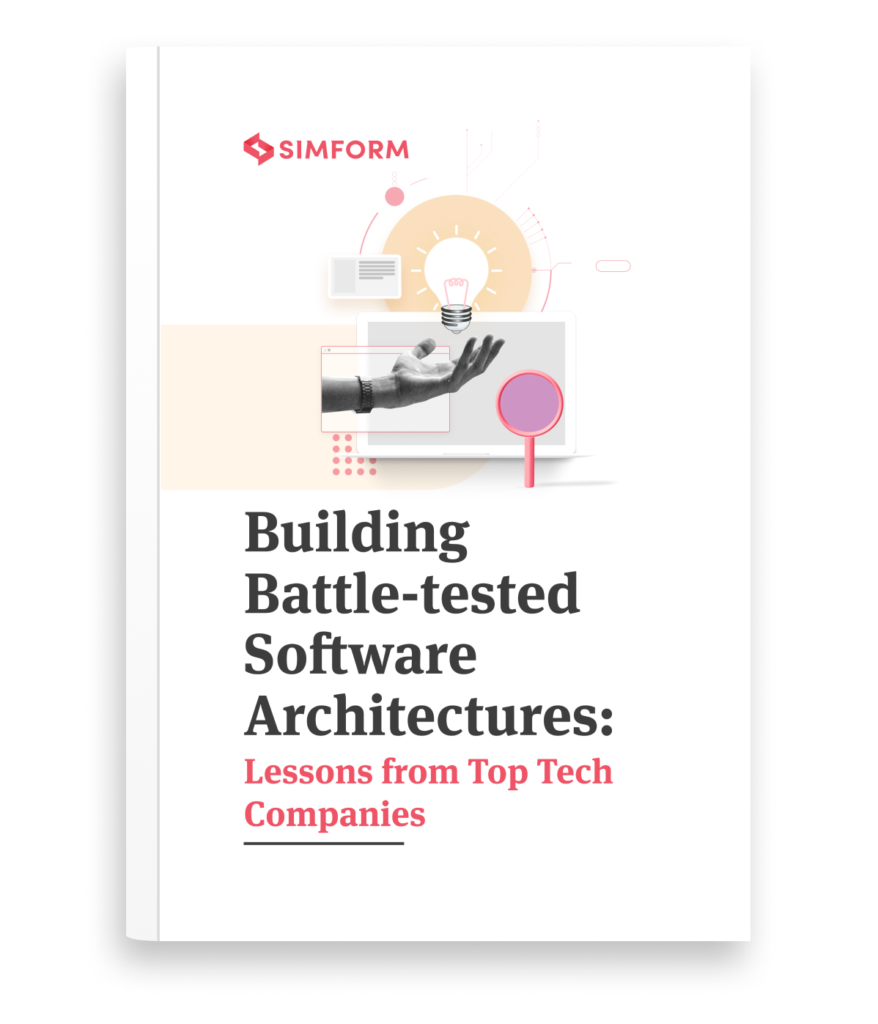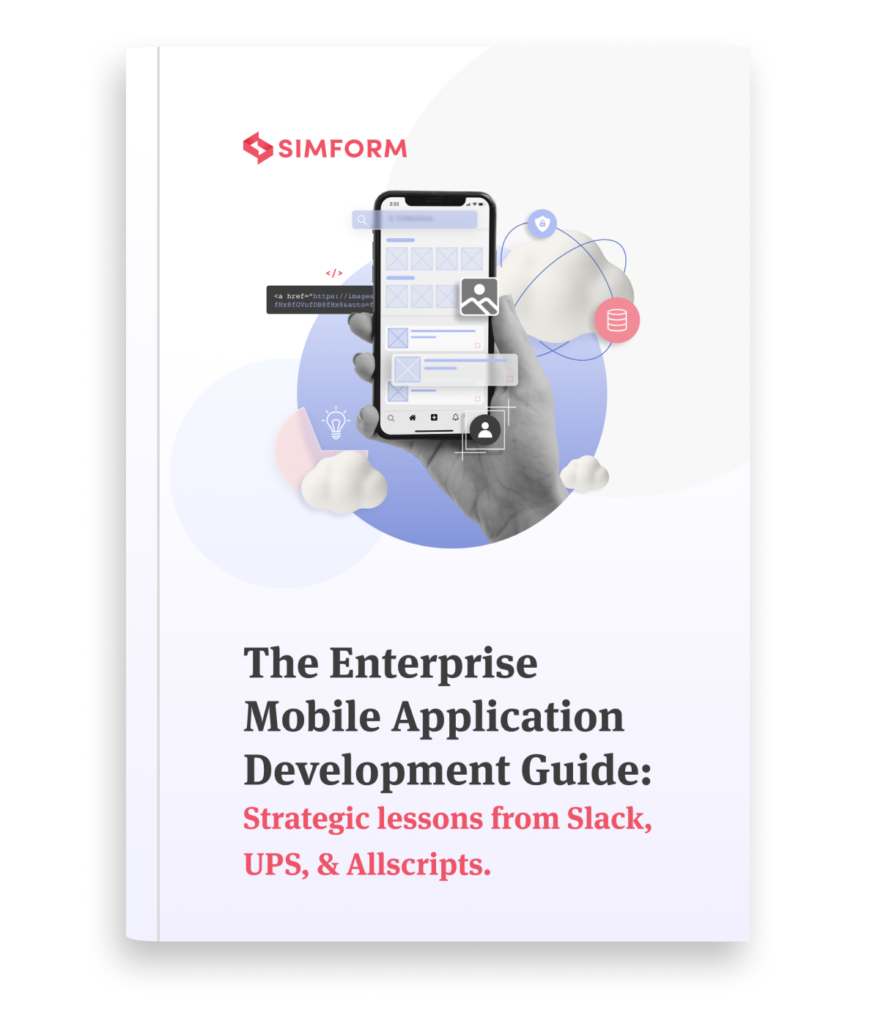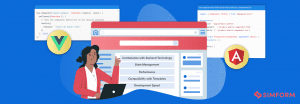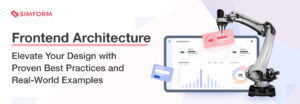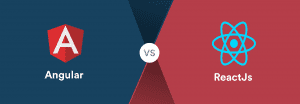SaaS Tech Stack- A Concise Guide for Decision Makers
Today, there’s an app out there for almost anything. Spotify, Zoom, Netflix, Google Docs, and Hubspot are some widely used apps. But have you ever thought about what is common in these apps? All of them are popular SaaS-based products.
Popular ride-hailing giant Uber is a noteworthy example of a SaaS-enabled app solution. To cope with a huge chunk of ride requests, Uber first adopted a microservice model in 2014. Furthermore, it has created a React component library called Base Web to streamline the overall designing process.
So how to choose the right tech stack for SaaS? If you are looking for the answer, this blog is the right place to start with. But before we dive deeper, let’s have a quick overview of the SaaS tech stack.
What is a SaaS tech stack?
A SaaS tech stack is a combination of technologies used. It is a set of frameworks, libraries, software languages, and infrastructure used to develop and launch a fully-functional platform.
If you have the best sales team, product team, or customer success team, all of them are of no use without a suitable tech stack. The tech stack is your software’s foundation that defines the entire development process. Consequently, it directly affects the time and money you put in for development.
First, let’s understand the types of SaaS architecture as it’s better to have a tech stack guided by your software architecture.
SaaS architecture
SaaS or Software-as-a-service is a licensing and delivery model where a software company or vendor hosts an application over a cloud server so that users can access it with the help of web browsers.
There are two types of primary architecture for SaaS app development.
- Single-tenant architecture – Users do not need to share their data in the case of single-tenant architecture as it lets them use just an instance of software rather than the entire one.
- Multi-tenant architecture – On the other hand, the multi-tenant architecture enables SaaS tech companies to use a single instance to support multiple servers. Here each user’s data is isolated, which eventually increases visibility.
Out of these two, building a SaaS application on a multi-tenant architecture is recommended more than often as it offers many benefits like cost-saving, code reusability, seamless upgrades, and more.
Want to know more about SaaS architecture?
Meanwhile, microservices as an architectural style is gaining a lot of attention among IT experts and changing the way SaaS works.
Microservices architecture for SaaS application development
Microservice architecture is a service-based architectural style where you can independently develop, test, and deploy different modules of an application. It would reduce costs of hosting by splitting your SaaS app into microservices. Thanks to the microservices frameworks, it becomes easier to isolate faults in your SaaS app. As a result, the entire framework will not get affected, even with a small failure in some modules.
You can use popular microservices frameworks like GoMirco, Micronaut, Spring Boot, Eclipse Vert.x, etc., to save money and time in SaaS app deployment. Different orchestration systems like Fargate, Kubernetes, or Amazon ECS can manage your microservices to scale up your SaaS application.
Key components of the SaaS tech stack
The tech stack for SaaS businesses is further divided into two parts, the first one is front-end, and the second one is back-end. React Native, Angular, Vue, Swift, etc., are some popular front-end languages, while Python, Django, Flask, Java, Perl, etc., are some popular back-end languages.
Refer to this SaaS stack diagram to get more understanding of this architecture –
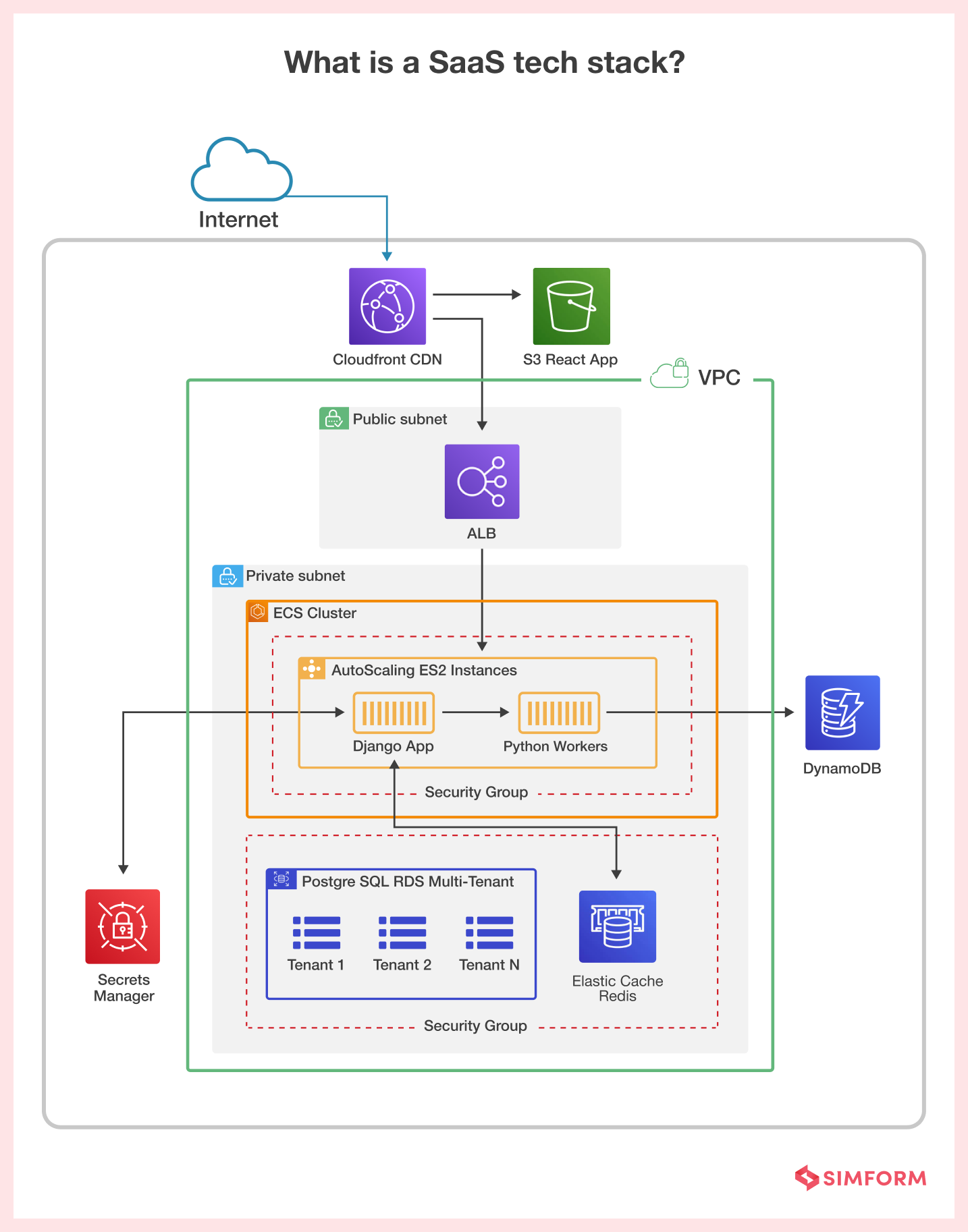
Front-end side
The front-end deals with the coding part of an app which the user interacts with. It consists of different links, buttons, tables, lists, sliders, inputs, forms, etc. Here are the three main technologies necessary for the functioning of the front-end –
-
HTML
HTML is the core component of almost every web project. It allows developers to structure the overall web page content. Moreover, HTML is useful for website developers to specify the kind of data a web page will display to the users.
-
CSS
Cascading Style Sheets or CSS can help you style the written document in a more polished way that users can view easily. What’s more, CSS can give a stylish and responsive feel to a web page. As a result, there is no need to reload the entire page to see the final result.
-
JavaScript
JavaScript makes an app or website more interactive by enabling the developers to create attractive sitemaps, pop-ups, tabs, contact forms, and much more. In addition to this, Javascript can dynamically update a webpage as per the user’s action.
Back-end side
The back-end can be considered the core aspect that drives the website or a mobile application and integrates the logic into it. In the back-end structure, a web server can accept the request generated by the browser. Then it will process such requests according to the coded logic and revert the relevant content data.
The back-end consists of servers, databases, languages, frameworks, etc. Let us look at them one by one –
-
Programming languages
Some programming languages used for back-end web development include Python, Java, PHP, C++, etc.
- Python has a simple syntax and coding process that speeds up development.
- PHP is perfect for a SaaS startup to empower its website’s back-end.
- C++ integrates all the components of C with additional features for large web applications and video games.
-
Database
We can call a database a systematic collection of records, databases, and files. There are many popular databases that are widely used by developers like Redis, MongoDB, MySQL, and PostgreSQL. Also, the database contains SQL and NoSQL as well.
-
DevOps tools
The DevOps tools used for back-end development are Docker, Kubernetes, Jenkins, Ansible, ELK Stack, Prometheus, Grafana, etc.
-
Server
The widely used servers by back-end developers are IIS, AWS, Google Cloud, Apache, Nginx, DigitalOcean, etc.
-
AI / ML
You can use accurate data analytics empowered by advanced algorithms that can drive value for your SaaS-based solution in the long run. These types of services are available via Microsoft Azure, Google Cloud, AWS, etc. You can even build AI / ML-enabled services by using various R, Go, and Python libraries on your own.
Simform is a Premier AWS Consulting Partner with an expert team of AWS-certified professionals who can assist you develop SaaS-based solutions using the right AWS services.
-
APIs
An API can combine multiple repetitive steps of the software development process. You can call it a bridge between a client and a server as it facilitates the server to fetch relevant data and share the same to the database. These interconnected APIs can heavily affect numerous services. So if any of them fails, such utilities will not function properly.
-
Event brokers
An event broker is an appliance, middleware solution, or SaaS empowered app that is used to communicate events between consumers and event producers in a predefined pattern. Developers often prefer to use popular frameworks like RabbitMQ or Kafka to streamline the back-end events in a CQRS architecture, complex back-end structures, and distributed sources of different data.
Tech stack of popular startups
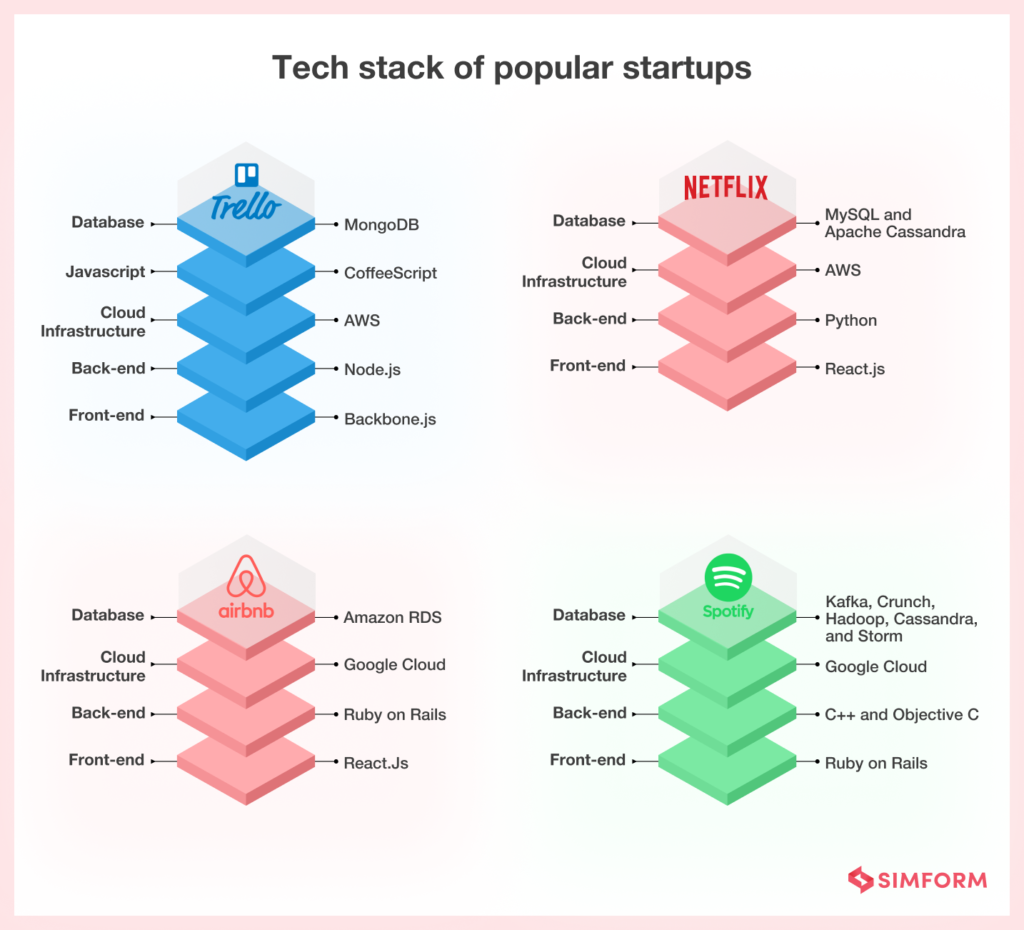 Trello
Trello
Trello, a popular task tracking project management tool, empowers thousands of organizations every day with its blazingly fast performance.
This popular SaaS-based platform’s tech stack comprises various components. CoffeeScript, Python, and MongoDB are some of the primary technologies of Trello.
Database: Trello’s engineering team chose MongoDB due to two primary reasons.
- To have blisteringly fast performance in their app.
- To release versions without interrupting access to the app.
MongoDB allowed them to achieve this by normalizing the data only when necessary and providing the ability to run different versions of the Trello code against the same database.
Javascript: Earlier, Trello relied on pure Javascript for both client and server, but eventually, it tried CoffeeScript and soon converted the code over it as it worked out well. This transition to CoffeeScript gave them code brevity and readability while maintaining the same semantics they used with pure JavaScript.
Cloud infrastructure – Trello has chosen Amazon Web Services as its cloud services provider, facilitating its users to store data on AWS EC2, Glacier, S3, and GCS.
Back-end – Trello wanted to have an instant propagation of updates to ensure a smoother user experience. For this, it needed an event-driven and non-blocking server. Therefore, it used Node.js for its server-side and as a prototyping tool to build single-page web apps.
Front-end – Trello uses Backbone.js for all the models, views, and routes to support real-time updates over the event board. In addition, Backbone.js works with Mustache logic-less template and HTML History 5 API. Finally, Trello has built its own client-side model cache for faster updates and reusing the codes in a better way.
Netflix
Netflix has gained massive popularity across the globe thanks to the entertaining content that it offers. However, even with access to highly addictive content, an OTT provider could not guarantee success if not backed up by a robust tech stack. Taking a peek into its tech stack, Netflix uses Kafka, DynamoDB, AWS, ReactJs, etc.
Database: Netflix uses Redix, Apache Cassandra, MySQL, and PostgreSQL. With Netflix’s data growing and turning into a huge pile, it uses Cassandra nodes to optimize database structure. Kafka provides Netflix with advanced control over the entire streaming process to satisfy viewer demands more quickly and efficiently.
Want to make a successful streaming app?
Cloud infrastructure – For cloud hosting, Netflix relies on Amazon EC2 servers, and Amazon RDS. In addition, it uses AWS elastic transcoder to format videos to save them from unnecessary buffering. Finally, Netflix uses AWS to manage business processes like content delivery, subscriptions, and customized recommendations.
Back-end – Initially, Netflix was dependent on Java for the back-end framework. But later, it started using Python to rewrite a few Java processes. Then it integrated Artificial Intelligence (AI) and Machine Learning to make its content more user-specific. Netflix used Node.js to add container layers to edge services. To introduce a promise-based approach, Netflix has added the RxJS library to generate powerful event-driven programs.
Front-end – Earlier, Netflix was using Java-enabled HTML renderers on both the front-end and the back-end. However, the Java-based approach has affected its overall performance by providing markup at the UI layer. Therefore, Netflix adopted React.JS for server-rendering. React eliminates the overall runtime performance and helps develop modular applications.
Spotify
Spotify is a digital podcast, music, and video streaming service platform. You can use it to access millions of songs worldwide. However, processing millions of data and user records is not an easy task. And that is where Spotify’s tech stack comes into play.
Database – The personalization offered by Spotify is exclusively based on its database. Kafka, Crunch, Hadoop, Cassandra, and Storm are the pillars of Spotify’s database. For instance, when a user searches for a particular song or podcast, Kafka fetches data while Hadoop, Crunch, and Storm process this data in real-time. At last, everything gets stored in Cassandra.
Cloud infrastructure – Back in 2016, Spotify announced its migration to the Google Cloud Platform to handle the sizable amount of user data seamlessly. It’s fair to mention that Spotify used Dataflow for streaming processes and Pub / Sub for messaging.
Back-end – Spotify depends on Javascript to handle numerous active connections and communicate with the back-end successfully. From its origin, C++ is at the core of Spotify, but it further implemented various languages for better development. It uses Objective-C for Mac OS X and JavaScript for the native desktop app.
Front-end – Coming to the front-end, Spotify relies on Ruby in Rails, Javascript, CSS, and HTML. Spotify has acquired the Java SE subscription model to make its licensing process smoother. This model equips Spotify with frequent security updates, higher stability, innovation, and performance.
Airbnb
Based in the USA, Airbnb is like a giant when it comes to the booking scene. It is one of the largest global marketplaces for excellent places to stay. According to a source, Airbnb should have around 2.9 million hosts worldwide in 2022. Also, there might be more than 7 million listings in 2022. But have you ever thought of the secret behind Airbnb’s tremendous success? The main success factor here is Airbnb’s tech stack.
Database – Previously, it was using MySQL for its database management but eventually shifted to Amazon RDS. Amazon RDS enables it to store all the important data in a cloud-enabled database to simplify time-consuming and routine tasks.
Infrastructure – Airbnb has completely moved to cloud storage for enhanced security, convenience, and speed. Airbnb counts on Amazon S3 and Redshift when it comes to cloud storage. For cloud hosting, Airbnb has chosen Amazon EC2, which efficiently distributes traffic during sudden spikes. Therefore, the site generally remains free from breakdowns and lags.
Back-end – Airbnb uses Ruby on Rails (RoR) for the back-end to speed up its development processes. Also, this framework lets Airbnb save big on development costs. Furthermore, Airbnb uses Node.js to do isomorphic server-side rendering via its hypernova service.
Front-end – Since its inception, Airbnb has been heavily dependent upon Javascript for its front-end. However, Javascript has evolved significantly over the past few years due to adding the latest features and frameworks. Talking about Javascript, Airbnb uses React as its front-end framework. ReactJs is a powerful UI library that is highly flexible.
Get in touch with our in-house SaaS experts
Things to consider while choosing SaaS tech stack
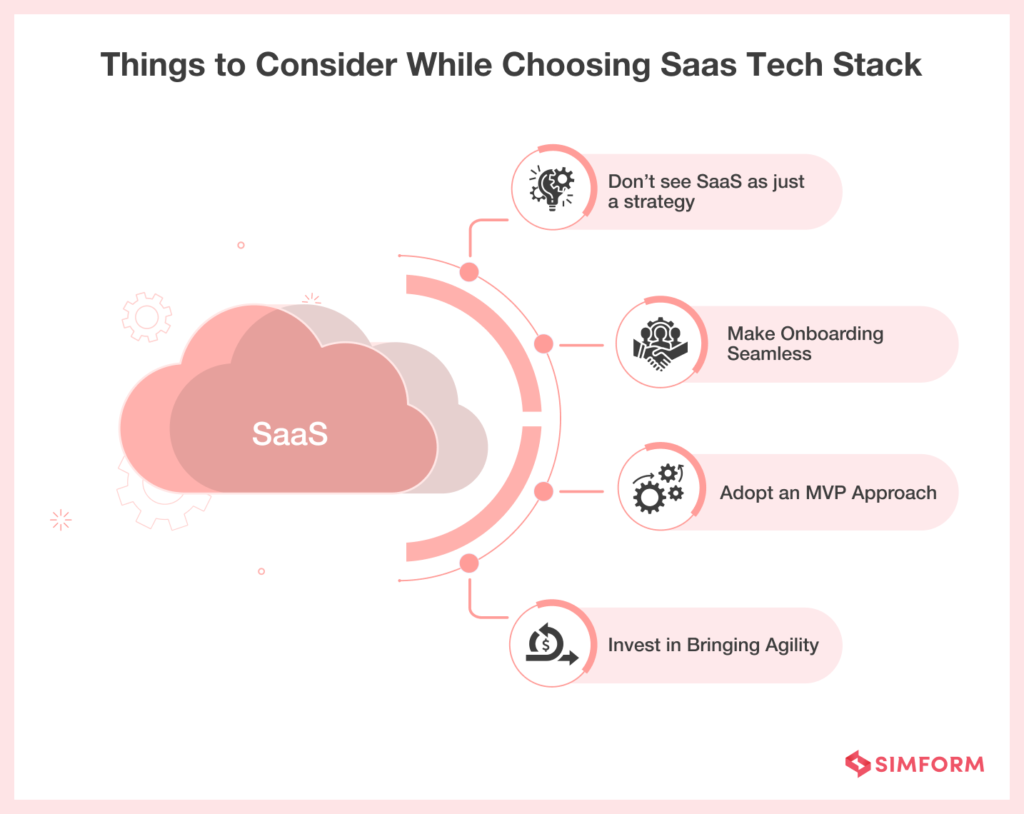 Selecting the right SaaS stack for your application development is not so easy. However, choosing the right tools, and technologies parallel to your project’s objectives is imperative. Also, you need to evaluate the pros and cons of your chosen tech stack so that it may not end in a financial disaster.
Selecting the right SaaS stack for your application development is not so easy. However, choosing the right tools, and technologies parallel to your project’s objectives is imperative. Also, you need to evaluate the pros and cons of your chosen tech stack so that it may not end in a financial disaster.
Here are a few impactful strategies that can help you make the right choice of tech stack for your next SaaS project. Let’s explore them one by one –
1. Don’t see SaaS as just a tech strategy
SaaS has offered an on-demand approach and a single to the traditional business to digitize their offerings. There is no such restriction to location; anyone across the globe can access it easily. The SaaS model makes it easier for service providers to utilize different resources like servers, storage, and networks per product requirements.
Additionally, the SaaS business model allows companies to integrate the cloud infrastructure layer containing security policies to manage user permissions, access, and identities. So, this is how SaaS can help enterprises to bring digital transformation.
2. Have a seamless client onboarding process
No matter how good and advanced your SaaS solution will be, it is of no use if your customers find it difficult to use. Therefore, you need to ensure that your SaaS onboarding process is faster, smoother, and easy to understand.
Let’s take the example of Hubspot. It asks its users about themselves and the need for the product via different questions. This microsurvey can help Hubspot understand customer preferences so that they can provide tailor-made experiences.
3. Adopt an MVP approach
You can opt for the MVP to grab the potential opportunity and chart out the SaaS product map to meet customer needs more effectively. It is the first version of a product that can assist you in discovering what your prospects require.
Based on customer feedback, you can re-work your app’s approach or offer more market differentiation through this MVP. As a result, you can get a brand new perspective on the success of your solution.
4. Invest in bringing agility
SaaS technology stack can facilitate users to be agile and respond to market demands more quickly and efficiently. Spotify is the best example of this. It has divided its employees into Squad, Tribe, Chapter, and Guild.
Squad works on creating and improving the Android client and building the Spotify Radio experience. The collective unit of different Squads is called Tribe, which mainly deals with back-end infrastructure. This Tribe further gets divided into Chapters and Guilds with people working on a similar competence segment.
Ready to build your SaaS tech stack?
The choice of a tech stack plays a game-changer role in the success of your web or mobile application. Therefore, choosing the right tech stack for your SaaS solution becomes an important thing. You need to consider many important factors like the right SaaS tools, frameworks, and cloud solutions that can help you expand your business over a long period. In this guide, we have explored SaaS stacks used by prominent businesses and the considerations to choose the perfect one for your SaaS product development.
However, it would be advisable to consider that the tech stack chosen by you will impact your app’s features and overall performance. So if you are looking for further assistance in choosing a tech stack or want to know more about it, Simform is the best choice for you. Feel free to reach us today to learn more about our services.

